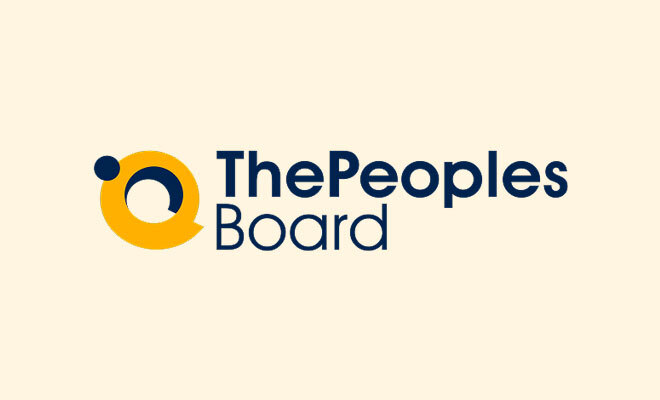As a part of the onboarding buddy program, experienced employees, referred to as “buddies,” are paired with new hires to provide guidance, support, and a sense of belonging.
In India, where workplace cultures are diverse, implementing an onboarding buddy program or buddy system can help new employees acclimate to their roles, build connections, and feel more engaged.
This article explores how Indian companies can create and implement an effective onboarding buddy program to enhance onboarding experiences and foster a supportive workplace culture.
What is a Buddy Program at Work?
A buddy program at work is a structured program designed to pair new hires with experienced colleagues, known as buddies. The primary purpose of a buddy program is to provide support, guidance, and mentorship to new employees, helping them navigate the organization, understand company policies and procedures, and become productive team members. This program is an essential component of an effective onboarding process, leading to improved job satisfaction, increased productivity, and better employee retention.
By implementing a buddy program, companies can ensure that new hires feel welcomed and supported from day one. This structured approach not only helps new employees acclimate to their roles more quickly but also fosters a sense of belonging and engagement within the organization. The buddy program is particularly beneficial in diverse workplace cultures, such as those in India, where understanding cultural nuances can significantly impact the onboarding experience.
Importance of a Buddy Program
Transitioning into a new organization can be overwhelming for new employees. They must navigate unfamiliar processes, adapt to organizational culture, and establish working relationships. A buddy program addresses these challenges by:
- Promoting Social Integration: It helps new hires connect with colleagues, reducing feelings of isolation. This is crucial for new hires to form meaningful connections and feel like they are welcomed by the organization.
- Accelerating Onboarding: Buddies provide insights into the company’s workings, enabling faster adaptation. Implementing a buddy program in the workplace can accelerate the rate at which the new employee adapts to the company culture.
- Enhancing Retention: Employees who feel supported are more likely to stay with the organization. A buddy program can help this by providing a comfortable point of contact for the new hires to voice their concerns.
- Fostering Engagement: A well-structured buddy program strengthens employee bonds, increasing overall job satisfaction. The onboarding process can become a lot smoother if the employees feel engaged from the get-go.

Steps to Create a Buddy Program
To create an onboarding buddy program, you will need to keep the employee requirements and company needs in mind. It should make good use of the talent of those suitable for the role of a buddy and foster a positive work environment for those involved in the process.
Define the Objectives of the Program
Clearly outline what you aim to achieve with the buddy program. Be aware of why the program is being implemented and its potential benefits.
Typical goals targeted in a buddy program include:
- Helping new hires integrate into the company culture.
- Providing a go-to resource for questions and concerns.
- Facilitating knowledge sharing between experienced and new employees.
Align these objectives with broader organizational goals, such as improving retention or boosting employee engagement. The buddy program in place should maintain a good balance between employee engagement and company targets.
Identify Key Roles in the Program
The results of a buddy program are highly dependent on the individuals involved in the process and the dynamic that they can create between them. A successful buddy program involves multiple stakeholders:
- The Buddy: An experienced employee who acts as a mentor, guide, and friend.
- The New Hire: The primary beneficiary who seeks guidance and support.
- HR Team: Responsible for designing, implementing, and monitoring the program.
Ensure that buddies are carefully selected and understand their responsibilities to make the program impactful.
Establish Criteria for Selecting Buddies
Given the various steps involved in an onboarding process, having the perfect buddy program at work is important to guide the new hires. As such, choosing the right buddy is crucial. The ideal buddy should be:
- Experienced: They should have a strong understanding of the company’s culture, processes, and expectations.
- Approachable: Someone who is friendly, empathetic, and easy to talk to.
- Aligned in Role/Department: A buddy from the same team or function can provide more relevant insights.
- Committed: Ensure the buddy is willing and has the time to dedicate to this responsibility.
To make the process fair and effective, allow employees to volunteer or nominate themselves as buddies. They serve as the main guide during the onboarding process and hence should be open to communicating with the new hires.
Develop a Structured Framework
A buddy program should follow a structured approach to ensure consistency and effectiveness. Create a framework that includes:
- Duration: Specify how long the buddy relationship will last, typically 30 to 90 days.
- Goals: Define what the buddy-new hire pair should achieve during the program.
- Meetings: Set expectations for regular check-ins, whether weekly or bi-weekly.
- Topics: Provide a list of topics to cover, such as company policies, team dynamics, and growth opportunities.
Train and Prepare the Buddies
Equip buddies with the skills and tools they need to support new hires effectively as part of the onboarding buddy program. From company policy to onboarding procedures, a buddy should be able to address any queries sent their way.
For this, conduct training sessions that cover:
- The role and responsibilities of a buddy.
- Active listening and communication techniques.
- Guidance on providing constructive feedback.
- Strategies to handle common onboarding challenges.
In India, where cultural nuances play a significant role in workplace interactions, training should include sensitivity and inclusivity. This ensures that the buddy can make the new hire feel welcomed and included.
Match Buddies and New Hires
Pairing the right buddy with the right new hire can significantly impact the program’s success. Consider factors like:
- Role alignment.
- Personality compatibility.
- Cultural or linguistic commonalities, especially in diverse Indian workplaces.
For example, pairing someone from the same regional language can make the new hire feel more comfortable and supported.
Provide Resources and Tools
With the right tools and resources at hand, a buddy program can work wonders for productivity. Make it easier for buddies to support new hires by equipping them with necessary resources, such as:
- An onboarding checklist.
- FAQs about company policies and processes.
- Access to collaboration tools like Slack, Microsoft Teams, or WhatsApp for quick communication.
- A guide outlining the buddy’s role and tips for effective mentoring.
Incorporate Feedback Mechanisms
Feedback is essential to refine and improve a buddy program. Implement mechanisms to gather insights, such as:
- Surveys: Collect feedback from both buddies and new hires about their experience.
- Check-ins: HR can conduct regular check-ins to address challenges and ensure the program is on track.
- Performance Metrics: Measure the program’s impact on onboarding success, employee engagement, and retention rates.
Recognize and Reward Buddies
Acknowledging the efforts of buddies motivates them and reinforces the importance of the program. Recognize their contributions through:
- Public appreciation during team meetings or on company communication channels.
- Certificates or awards for exemplary buddies.
- Incentives, such as additional leave or monetary rewards.

A Buddy’s Role and Responsibilities
When someone takes on the role of a buddy, they also agree to adhering to crucial responsibilities that are necessary for ensuring the seamless integration of the new hire.
Building Trust and Rapport
A buddy’s role is to build trust and rapport with the new hire, creating a safe and supportive environment where they feel comfortable asking questions, sharing concerns, and seeking advice. A buddy should be approachable, reliable, and knowledgeable about the organization, its culture, and its processes. By building trust and rapport, a buddy can help the new hire feel more confident, reduce anxiety and stress, and accelerate their integration into the team.
Promoting Collaboration and Teamwork
A buddy should also promote collaboration and teamwork by introducing the new hire to other colleagues, facilitating communication, and encouraging participation in team activities. By fostering a sense of belonging and connection, a buddy can help the new hire develop a stronger sense of commitment to the organization and its goals. This, in turn, can lead to improved collaboration, increased productivity, and better job satisfaction.
Supporting Professional Development
A buddy should also support the new hire’s professional development by providing guidance, feedback, and coaching. This can include helping the new hire set goals, develop skills, and identify areas for improvement. By supporting professional development, a buddy can help the new hire grow and develop in their role, leading to increased job satisfaction, improved performance, and better career prospects.
By understanding the role and responsibilities of a buddy, organizations can create effective buddy programs that support the success of new hires, improve employee retention, and drive business results.
Low-Cost Strategies for Implementing a Buddy Program
For small businesses or startups operating on tight budgets, the following strategies can help:
- Digital Onboarding Tools: Use free or affordable platforms like Google Workspace or Trello to manage buddy program activities.
- Buddy Huddles: Organize group sessions where multiple new hires and buddies can interact and share experiences.
- Peer-Led Training: Encourage buddies to conduct informal knowledge-sharing sessions instead of relying solely on HR.
Benefits of a Buddy Program
After implementing a buddy program at work, there are many perks that your company is sure to enjoy. By carefully executing this program, you can easily see how it:
- Boosts Productivity: New hires become productive faster with a buddy’s guidance.
- Builds Relationships: It fosters trust and camaraderie among employees.
- Strengthens Company Culture: Buddies help new hires understand and adapt to organizational values.
- Improves Retention: Supported employees are less likely to leave prematurely.
- Cost-Effective Learning: Peer mentoring is a low-cost way to impart knowledge and skills.
Challenges in Implementing a Buddy Program
While a buddy program at work is sure to provide many benefits, it does pose some unique hurdles that you should be ready to overcome.
- Time Constraints: Buddies may struggle to balance their responsibilities and mentoring duties.
- Mismatch Issues: Poor pairing can lead to an ineffective relationship.
- Lack of Commitment: Buddies who aren’t genuinely invested may not provide adequate support.
To address these challenges, ensure the buddy program is well-structured and support buddies and new hires continuously. Having an onboarding buddy program that is prepared to face these issues and more is a crucial quality to look out for.
Conclusion
A buddy program is a powerful tool for improving onboarding experiences and fostering a supportive workplace environment. For Indian companies, where diversity and cultural nuances play a pivotal role, such programs can bridge gaps and create meaningful connections.
By carefully planning the program, selecting the right buddies, and providing adequate resources and training, organizations can ensure a smooth transition for new hires. After all, the success of a buddy program lies in its ability to make employees feel welcomed, valued, and empowered from day one.
Investing in an effective buddy program is a step toward building a thriving, engaged, and productive workforce.






